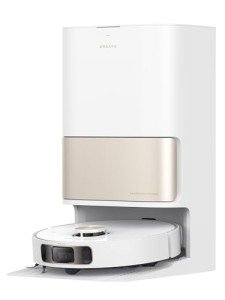The Rise of Automatic Hoover Robots: Revolutionizing Home Cleaning
In today's hectic world, technology continues to reshape the way we live and work. Amongst the developments making a significant impact on households are automatic hoover robots, typically described merely as robot vacuums. These intelligent cleaning devices promise not only benefit however likewise performance in preserving clean home. This article explores the advancement, advantages, limitations, and future of automatic hoover robots.
The Evolution of Automatic Hoover Robots
The principle of automated cleaning gadgets goes back to the early 20th century, however it wasn't until the arrival of sophisticated robotics, sensing units, and expert system that robot vacuums became feasible. The following table highlights key milestones in the evolution of automatic hoover robots:
| Year | Turning point |
|---|---|
| 1996 | The first automatic vacuum is introduced by Electrolux. |
| 2002 | iRobot releases the Roomba, a consumer-grade robot vacuum. |
| 2010 | Intro of innovative mapping innovation and collision sensors. |
| 2016 | Robotic vacuums begin incorporating with smart home systems. |
| 2020 | Increased adoption of AI and maker learning for better cleaning algorithms. |
How Automatic Hoover Robots Work
Automatic hoover robots operate using a combination of sensors and algorithms to navigate household spaces. Below are crucial parts that contribute to the functionality of these machines:
- Sensors: Lidar (light detection and ranging), infrared, and cliff sensors assist the robot map the area and prevent challenges.
- Mapping Technology: Many designs now offer sophisticated mapping capabilities, enabling efficient navigation through spaces, determining high-traffic locations, and remembering the design of your home.
- Cleaning Modes: Most robot vacuums include numerous cleaning modes, consisting of spot cleaning, edge cleaning, and methodical navigation.
- App Connectivity: Many modern-day designs enable control via smartphone apps, allowing users to set up cleansings and personalize settings remotely.
Benefits of Automatic Hoover Robots
Automatic hoover robots provide a huge selection of benefits, making them attracting a significant variety of consumers. Here are some engaging benefits:
- Time-Saving: Users can schedule cleanings and multitask while the robot does the work.
- Consistent Cleaning: Regularly arranged cleansings guarantee that homes remain tidy.
- Ease of access: Robots can clean hard-to-reach areas like under furniture without manual effort.
- Smart Features: Integration with smart home systems permits voice control and more sophisticated scheduling alternatives.
Limitations of Automatic Hoover Robots
Despite their advantages, automatic hoover robots have specific disadvantages that users need to think about:
- Battery Life: Most robot vacuums require recharging, which can interrupt cleaning cycles.
- Suction Power: While reliable for light particles, they may struggle with deeply embedded dirt or thick carpets.
- Maintenance: Regular cleaning of brushes and filters is necessary to preserve efficiency.
- Cost: High-end models can be expensive, which may be a barrier for some customers.
Future of Automatic Hoover Robots
As technology continues to advance, there are numerous exciting prospects for automatic hoover robots. Here's what to expect in the coming years:
- Enhanced AI: Improved machine discovering algorithms could allow robots to adapt their cleaning techniques based on the specific design and dirt levels in a home.
- Multi-Functionality: Future models might not just vacuum however also mop, disinfect surfaces, or perhaps provide real-time ecological tracking.
- Combination with Home Automation: Increased interoperability with different smart home systems will likely improve control and functionality.
- Sustainability: Future versions may concentrate on environment-friendly functions, consisting of eco-friendly elements and energy-efficient operations.
Often Asked Questions (FAQs)
1. How frequently should I run my automatic hoover robot?
- It mainly depends on your way of life, however running it a couple of times weekly can help preserve a tidy home, particularly in high-traffic areas.
2. Can best robot vacuums use a robot vacuum on carpets?
- Numerous robot vacuums are designed to work on carpets, however efficiency may differ depending on the density and density. Always examine the manufacturer's specifications.
3. Do robot vacuums work well with family pet hair?
- The majority of modern-day models are geared up with brushes and strong suction power specifically created to handle animal hair successfully.
4. Can I set up cleanings from another location?
- Yes, many robot vacuums come with smartphone apps that permit users to arrange cleansings and control functions from anywhere.
5. How do best robot vacuums preserve my robot vacuum?
- Frequently clean the brushes, empty the dustbin, and replace filters according to the producer's suggestions to guarantee optimum efficiency.
Automatic hoover robots represent a significant shift in the way homes approach cleaning. By integrating advanced innovation with easy to use functions, these gadgets not just offer benefit but also boost effectiveness in keeping clean living spaces. As improvements continue, the future of automatic hoover robots looks promising, possibly providing even more intelligent options for modern-day homes.
In a world where time is of the essence, the role of technology in home care is becoming increasingly essential, making automatic hoover robots an exceptional financial investment for those seeking to streamline their lives while guaranteeing tidiness.

